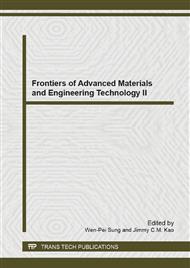p.532
p.539
p.545
p.550
p.554
p.559
p.563
p.566
p.570
Advance Control Experiment of Vibration Machine with High Vibration Intensity Based on SCM – Dynamics Characteristics and Advanced Control
Abstract:
The vibration-stress field could be formed by high vibration intensity in vibration machine to improve the ability of the collision, shock, shear and extrusion for the system, and it also can avoid plugging screen for vibration screening machine, which could make for solving some special requirements of the vibration machine. To research the vibration machines strongly nonlinear and high vibration intensity characteristic such as certain excitation and uncertain response, the vibration machine with its double-mass is built, and its vibration exciter uses two partial blocks as vibration motor. In addition, dynamic vibration differential equation is established. To achieve high vibration intensity results based on the vibration machines safe working, the advanced control based on the SCM and Intelligent frequency conversion is put forward, and the advanced control system with its host computer, frequency converter, SCM, charge-amplifier, sensor and the vibration machine is been established.
Info:
Periodical:
Pages:
554-558
Citation:
Online since:
April 2014
Authors:
Price:
Сopyright:
© 2014 Trans Tech Publications Ltd. All Rights Reserved
Share:
Citation:


